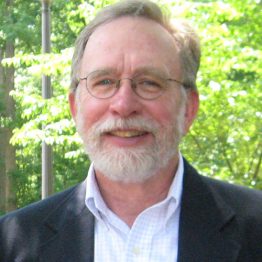You have /5 articles left.
Sign up for a free account or log in.
Earlier this year, I did a Q&A with my dad on his three decades of academic telecommuting. In that piece, my dad talked about how working remotely from his institution (Harvard) in a lower-cost location (Montana) enabled him to both keep his  research going, and to live a more sane and balanced life.
research going, and to live a more sane and balanced life.
When I asked my dad to do the Q&A, I was thinking about if academic employment trends may start to follow academic enrollment trends. (See 5 Reasons Why Low-Residency is the Future of Higher Ed Employment).
The idea that I’ve adopted my dad’s academic career as a model for my academic career was not so much on my mind. After all, I live close enough to campus to walk to my office in a few minutes. Where my dad is a remote academic, I’m highly local.
Over the last few weeks, however, I’ve been reflecting more on my academic career progression. What I’m realizing is that, in many ways, I’ve adopted my dad’s academic career as my model.
How have I been walking in my dad’s academic career footsteps?
Most directly, we both trained in the same discipline. Dad is a demographer. My training was heavier in sociology, but I ended up transitioning into social demography for my dissertation.
More than that, we went to grad school at the same university and in the same department, finishing our Ph.D.’s almost exactly 30 years apart. We even had many of the same professors.
Very early in my academic career, however, I made the transition away from sociology/demography, and towards online education and learning innovation.
For reasons that have as much to do with navigating a dual-academic career as with anything else, I made an early shift from a traditional faculty path to that of academic staff. That change, from a traditional academic to an alt-ac, has afforded me both a rewarding career and the ability to follow my wife across three institutions in as many states.
My move away from sociology/demography, and out of a faculty role, seems to indicate that I chose a different path from my dad. While he moved from a regular professor role to one of a researcher when he moved to Montana in 1987, he continued to engage in scholarship in his discipline.
My dad was never an administrator. He developed deep expertise and global reputation in housing research and was able to continue this scholarship from the geography of his choosing.
Nowadays, my main academic interest is in pursuing scholarship around learning innovation. As my research partner and co-author Eddie Maloney and I conceive of this field, learning innovation is an applied interdisciplinary field.
We see learning innovation as a discipline that integrates service (such as leading campus digital and online learning initiatives and centers for teaching and learning), with the study of the impact of this work on the colleges and universities in which these initiatives are conceived and run.
Eddie and I want to know why schools invest in learning innovation (and why they don’t), and the impact that institution-led efforts to advance student learning are having on everything from student outcomes to institutional resiliency.
Where I see close parallels in my own academic career goals, and the academic career path that my dad has followed, is in my desire to prioritize scholarship over advancement. My dad was never interested in climbing the academic ladder. He did not endeavor to move into ever-higher levels of academic rank and institutional responsibility.
Rather, my dad found the research area that he loved most - and found a way to contribute to that research community that was independent of his location or job title.
In my case, being a part of the work of online education helps me understand the relationship between digital learning and institutional change. I see how a transition from a purely residential and face-to-face model of instruction, and towards blended and low-residency and online learning, open up a school to new ways of thinking.
I’ve watched how the evolution of digital learning has helped traditional institutions to integrate the research on how people learn (learning science) into core residential teaching practices.
My dad’s academic field of housing demography, is, like learning innovation, an applied discipline. The work that my dad does is directly tied to the decisions that the housing industry must make. The nation’s large homebuilders rely on the research of my dad and his colleagues to decide where to focus their investments, and what sorts of houses to build.
As a researcher, my dad has had to work across domains of education, the private sector, and the government. Each sector is a consumer of his research, and each constitutes part of the housing ecosystem. This applied and practical orientation of housing demography makes for an interesting analog to the applied scholarship of learning innovation.
For the next phase of my career, I’m hoping that I will find some way (like my dad) to achieve a better academic/life balance.
It is an ongoing challenge to integrate the demands of a non-faculty leadership role in digital learning with my desire to have this work be the subject of research. The hands-on, day-to-day work of running digital learning initiatives can easily crowd out any time to think more broadly about the meaning of this work, much less engage in research and writing.
The flip side is that this work in digital learning is what keeps me grounded. The challenges and opportunities for leveraging digital learning as a transformational lever for institutional change are tangible and concrete in my world, rather than abstract and theoretical.
Still, I think my dad has been on to something over the course of his near five-decade academic career. He has managed to navigate academic careers as a marathon, not a sprint, and has therefore been able to remain relevant and productive over decades. That seems like a pretty good model to me.
Are you also a second-generation academic?








